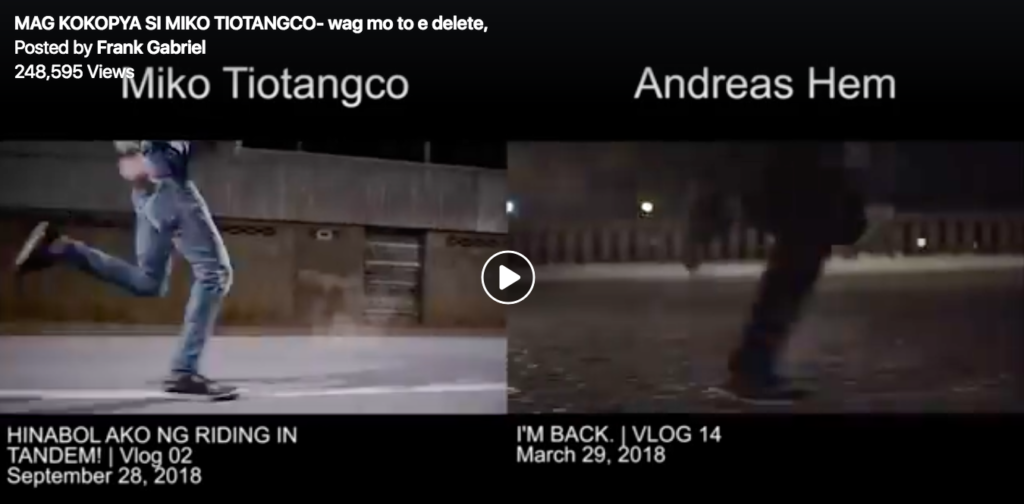For beginning artists, finding their unique artistic voice is probably the most challenging part of the creative process. That’s why most artists tend to look at other people’s work for inspiration and creative ideas. However, getting inspired sometimes leads to crossing the line between inspiration and copying.
In 2012, the Department of Tourism was accused of copying a six-decade-old Swiss tourism advertisement. Then 5 years later, the same government department was bombarded with criticism for being a “copycat” of South Africa’s campaign ad.
And with the internet at the tip of our fingertips, it’s so tempting to copy other people’s ideas and earn that same level of success. No wonder why plagiarism and copyright infringement are becoming on the rise not just in the world of academia, but also in creative industries.
In a Facebook post, Sydney-based YouTube Content Creator Frank Gabriel called out a fellow YouTuber, Miko Tiotangco, on copying Andreas Hem’s content.
Through a split-screen, Gabriel pointed out the supposed similarities of the vlogs posted by two different YouTubers. Apparently, Hem’s vlog was posted a year ago while Tiotangco’s content was only published later this year.
If you have seen the entire video, it’s conspicuous that the opening sequence in which Tiotangco is being chased by a motorcycle rider looks the same with Hem’s.
From the sequence and establishing shots down to the tiniest detail, Tiotangco’s vlog appears to be a “copycat” of Hem’s “I’m Back” video blog.
Gabriel clarified that his comment doesn’t intend to harm anyone. He sincerely admires Tiotangco’s skills when it comes to creating content and editing his videos. However, on the other side of the coin, he knows that plagiarism—in any form—is unethical and a threat to integrity.
“I know how hard to create an idea it takes weeks and even years. Don’t get me wrong editing is hard as well but editing can be learned but ideas and creativity is hard to come by. Trust me most artists do go on phases where there is no idea sipping in their head. Plagiarism is a crime punishable by law guys. If you guys don’t know, pwede kasuhan ‘yan and before you say na inggit ka lang, the answer to that my friend is no. I’m just disappointed and I won’t be able to sleep at night knowing na hindi ko ginawa ang tama,” he shared.
English writer Charles Caleb Colton once said, “Imitation is the sincerest form of flattery.” Yes, there are circumstances where copying is generally acceptable, especially if we’re learning from the creative process. It’s not bad in trying to understand how an output is created; it’s not wrong to be influenced by your role models. The only time that this common practice gets bad is when you start copying other people’s work, claiming it as your own, and profiting from it.
While we learn and grow from our source of inspiration, let’s also remind ourselves of the line between stealing and inspiration.
____
Read more from InqPOP!:
Pinoy photographer captures ethereal beauty of notable tourist spots — but there’s a twist
Graffiti and copyright: Why big brands can’t just use street artists’ work without consent
This theme park in Osaka will give you fake friends for the gram
‘Photographer’ turns out to be fake and people are not having it


